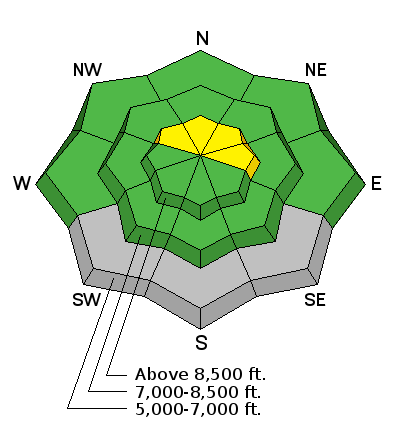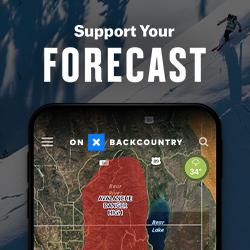There's another inch of new snow at the 8400' Tony Grove Snotel from yesterday, with 35 inches of total snow containing 94% of average water for the date, and it's 23 degrees. The CSI Logan Peak weather station reports 10 mph southwest winds and 18 degrees. You'll find shallow fresh snow on hard crusts at lower and mid elevations, but sheltered shady slopes up high, especially those with soft re-crystallized underlying snow, offer reasonably nice, fast shallow powder conditions. Upper elevation terrain in the central Bear River Range has decent coverage and mostly supportable snow. Outlying terrain like the Wellsville Range and the Front Canyons have less coverage, with access issues due to lack of lower elevation snow. The Tony Grove and Franklin Basin Roads are not maintained for wheeled travel in the winter!

We found very shallow snow and difficult, brushy traveling in the Wellsville Mountain Wilderness yesterday. (12-16-14)
Everyone needs to carry a shovel, probe, and transceiver. Be sure your rescue gear is functioning by practicing with it. You can bury your pack with your transceiver in it and have your partner find, probe, and excavate it. Then get them to do the same for you. Training your team is critical in this game.
+++ Quick and Easy Avalanche Rescue Practice Video............... ***HERE
A skier remote triggered a wind slab on a slope that had avalanched previously in the Central Wasatch, and a natural wind slab avalanche was spotted in the Western Uintas. Otherwise, it's been pretty quiet in the backcountry.
Visit our Backcountry Observations Page for more information.....







